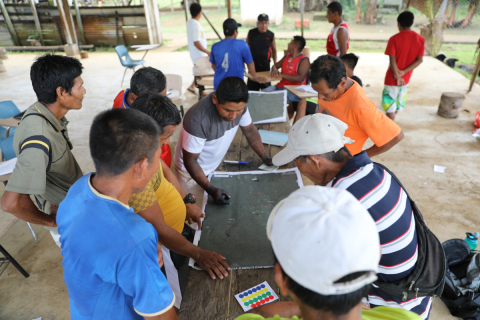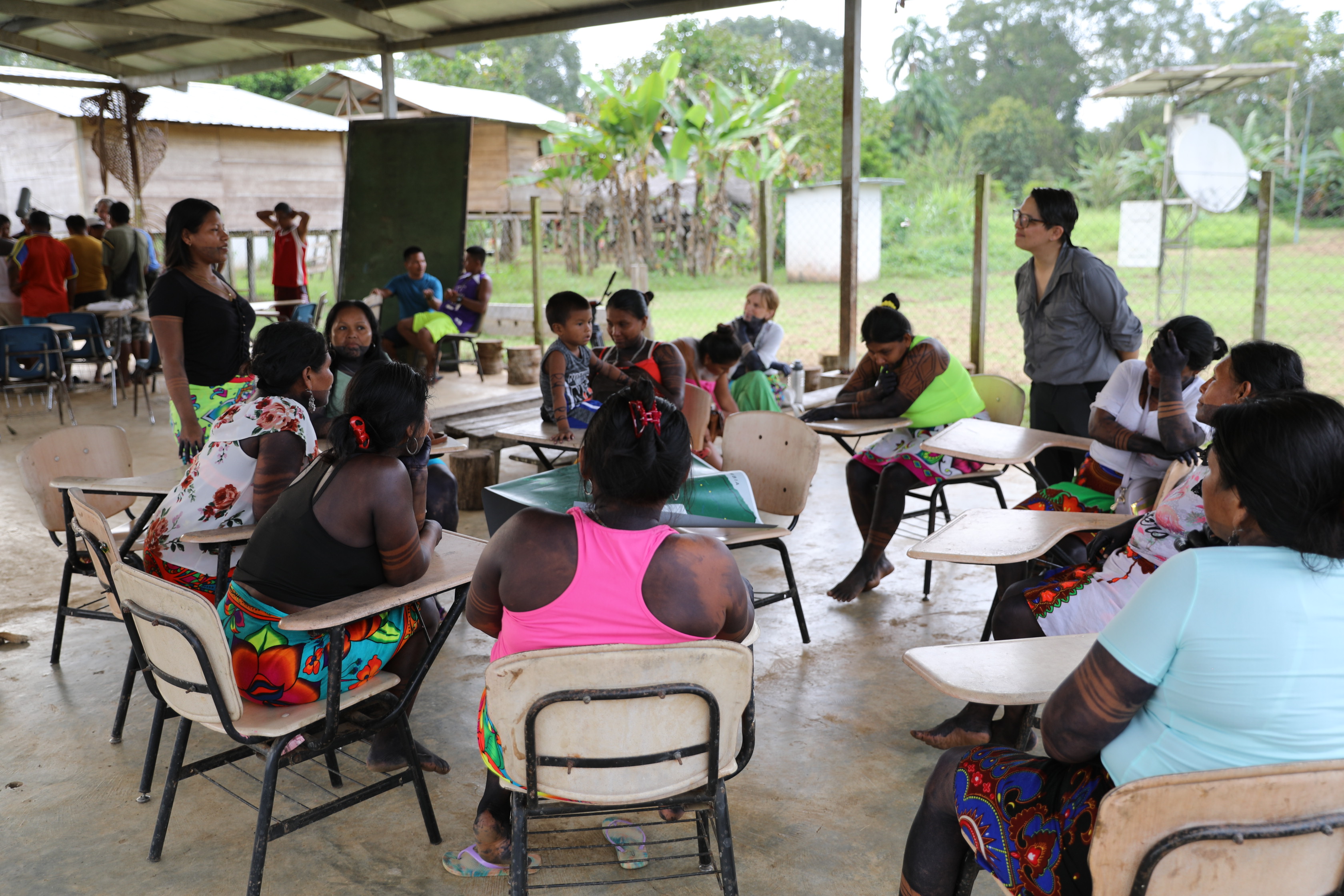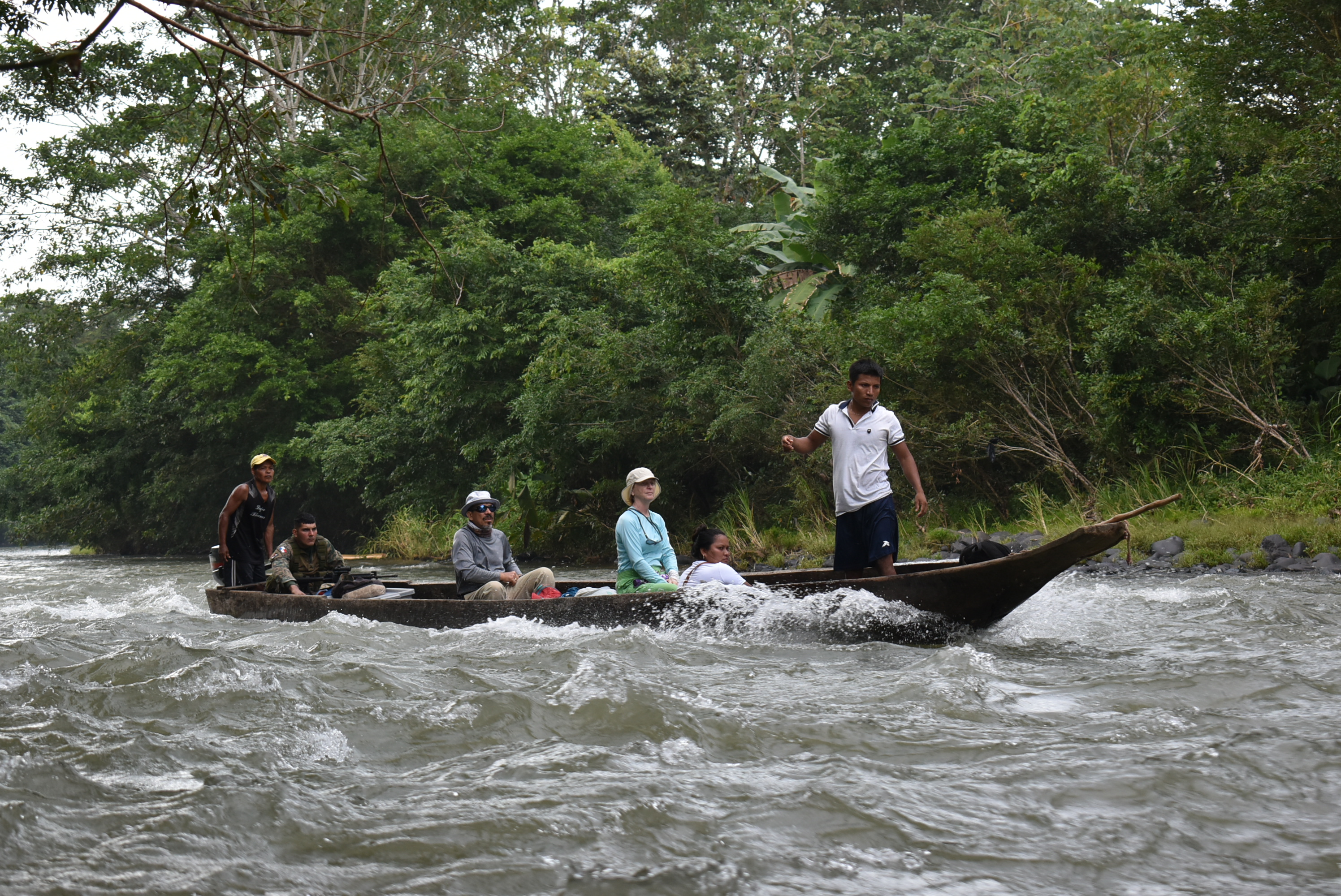
Forests on Indigenous lands in Panama have remained remarkably stable over the past two decades - more so than in protected areas - thanks in no small part to deeply rooted cultural values, a McGill-led study suggests.
The research team found that forest cover in the Indigenous lands remained stable at nearly double the rate of Panama's protected areas, including government-protected parks, meaning fewer instances of deforestation and more consistent with temporal disturbances followed by regeneration over time. Indigenous lands were defined using existing legal and customary boundaries.
The findings challenge a long-standing assumption in conservation: that protecting biodiversity requires keeping people out.
Science grounded in story and place
To understand both ecological patterns and cultural drivers, the researchers combined a top-down analysis of satellite data from 2000 to 2020 with a bottom-up approach: participatory mapping sessions with eight Emberá communities in eastern Panama. The researchers were able to work directly with Indigenous community members thanks to a carbon offsetting project in the Bayano and a research partnership in the Darién Gap.
"We'd print satellite images and ask men and women to point out the areas they use and value," said lead author E. Camilo Alejo, who completed the research as part of his PhD in McGill's Department of Biology. "That included places where they farm, hunt or gather, and also where they hold ceremonies or avoid for spiritual reasons."

The participatory mapping revealed that forest areas associated with spiritual and cultural significance tended to remain intact, while agricultural activity was clustered near forest edges, where some disturbance occurred.
"Many Indigenous communities integrate farming, spirituality and conservation in how they use the land," said Alejo. "Our findings show that this diverse set of values aligns with areas where forests have remained stable, suggesting a strong connection between cultural practices and long-term forest stewardship." Also noteworthy was that sacred sites, medicinal plant areas, and traditional hunting and gathering grounds were spread across the forest, reinforcing sustainable use.sacred sites, medicinal plant areas, and traditional hunting and gathering grounds were spread across the forest, reinforcing sustainable use.
"Our maps suggest that forests remain intact not just because they're remote, but because of how people value them," said Alejo. "These aren't just undisturbed forests; they're consistently cared for."
Learning from Indigenous worldviews
The study also flags a critical policy issue. Some Indigenous communities, especially in remote areas like the Darién Gap, still lack formal land titles, even though their stewardship has demonstrably preserved forests.
"Paradoxically, in many legal frameworks, you have to exploit land to claim title," Alejo said. "That incentivizes deforestation, which undermines exactly the kinds of practices that are keeping these ecosystems intact."

The authors call for reforms to land titling policies across Latin America to recognize Indigenous stewardship as a legitimate and proven form of land use, including Protected Areas. They also hope the findings will inspire new frameworks that blend conservation, food security and cultural heritage.
"This study shows how much we can learn from Indigenous cosmovisions: holistic worldviews that connect nature, culture and wellbeing," said Alejo. "There's real potential to rethink how we manage land, not just in Panama, but globally."
About the study
Diverse values regarding nature are related to stable forests: the case of Indigenous lands in Panama, by Camilo Alejo, Catherine Potvin, Manuel Ortega, Brian Leung, and Oliver T. Coomes, was published in Ecology and Society.
This research was funded by the Graduate Mobility Award from McGill University, the NSERC Discovery Grant and a Canada Research Chair (to Prof. Catherine Potvin).






